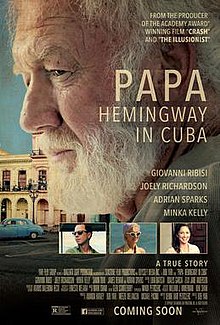| A Bigger Splash | |
|---|---|
 |
by Peter J. O’Connell
A Bigger Splash. Released
(USA): May 2016. Runtime: 125 mins.
MPAA rating: R for graphic nudity, some strong sexual content, language and
brief drug use.
Pantelleria, a remote island off Sicily, is a great place
for the jet set “to get away from it all” and enjoy the “dolce vita” of
sunbathing and splashing in the nude at a villa pool, gazing at spectacularly
scenic vistas, and devouring mouth-watering food. Director Luca Guadagnino’s A Bigger Splash, an English-language
production with an international cast, begins with a series of quick cuts
depicting this joyous lifestyle, scenes that constitute an almost irresistible
travelogue for a Pantelleria vacation. Featured in these scenes are rock star
Marianne Lane (Tilda Swinton) and her filmmaker husband, Paul (Matthias
Shoenaerts). Marianne cannot speak as she is still recovering from an operation
on her vocal chords.
Yet it is not actually possible, even on Pantelleria, to get
away from “it all.” Marianne and Paul have a tense encounter with some of the
African and Middle Eastern migrants who are washing ashore on the island. More
directly, Harry Hawkes (Ralph Fiennes) calls to tell the couple that he is
going to pay them an unexpected visit at the villa, which is his. Harry is a
record producer who helped make Marianne a star and became her lover. He also
introduced her to his friend Paul, who eventually became her husband. Harry
supposedly came to terms with that.
Harry is a manic motormouth, and soon after he arrives, he
does a happy, hilarious—yet somewhat creepy—solo dance, to a Rolling Stones
tune, that winds throughout and around the house. (Yes, you read it right;
Harry is played—brilliantly—by Ralph Fiennes!)
The awkwardness of the situation at the villa is intensified
by the fact that Harry is accompanied by a sulky, sultry teenager, Penelope
Lannier (Dakota Johnson), who he says is his daughter. No one knew that Harry
had a daughter, apparently because he never paid any attention to her until she
became a sulky, sultry teenager.
Tensions start to mount in the idyllic setting, often
communicated indirectly (symbol: Marianne’s muteness). Paul suspects that Harry
is trying to win back Marianne, and the producer also now seems to be showing a
bit too, shall we say, warm a degree of attention to the daughter that he
previously neglected. Marianne gives signs of feeling Harry’s magnetism once
again, and Penelope and Paul also seem to be developing an interest in each
other. Eventually, the tensions erupt into an act of hideous violence. (After
all, Pantelleria is a volcanic island.)
The local police conduct a lackluster investigation under
the direction of a commander (Corrado Guzzanti), who is starstruck with Marianne.
Suspicion falls on various of the celebs, but, just maybe, wouldn’t it be
easier, after all, simply to blame the migrants?
A Bigger Splash
doesn’t have Tom Hanks, Daryl Hannah and the ghost of John Candy; it isn’t a
sequel to their 1984 hit comedy, Splash.
What A Bigger Splash does have are
terrific performances by Ralph Fiennes and Tilda Swinton as characters
different from ones that we usually associate with these actors. Matthias
Schoenaerts and Dakota Johnson are also quite good in their roles in this dark
film—which includes moments of dark humor—set in a sun-kissed paradise-not,
with a topnotch soundtrack. Take the plunge and see A Bigger Splash!
“Footnote” to the
film: A Bigger Splash is the second film made with elements from the 1969
classic French/Italian psychological thriller La Piscine. Swimming Pool
(2003) was a French/British version.




